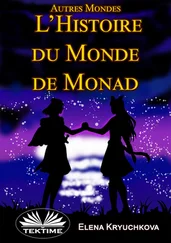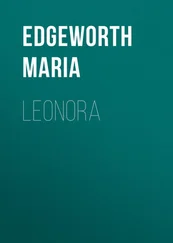‘I like Stravinsky a lot too,’ Walter comments.
‘I know Stravinsky, he has been to my house; he never wants to talk about music, only about his sinusitis,’ answers Leonora.
‘Ravel is my favourite,’ interrupts Remedios.
‘I’m not sure why, but I’ve always had the impression that Ravel was going deaf while he was composing his Bolero , and that’s the reason why it starts out so muted and ends up in the loudest of fanfares,’ Leonora interrupts back.
Her comments irritate Walter, while Remedios’ seduce him. The old Austrian and his wife Clara were members of the circle that surrounds Remedios, and he still remembers the occasion when one night Leonora served her guests caviar on a silver-plated platter and as Benjamin Péret was helping himself to a full ladle, the Englishwoman confessed:
‘It’s tapioca we dyed with squid ink; it tastes just the same, though, doesn’t it?’
Gruen relished the occasion, but Péret was less pleased about it.
Remedios finds an ocean of peace in the company of the old widower. The idea of becoming a ‘serious’ artist, as he is proposing, is a temptation. ‘You paint and I’ll provide.’ The couple set up home together in a flat on Avenida Álvaro Obregón.
Now that Remedios is no longer obliged to illustrate laboratory catalogues she can paint Woman or the Spirit of the Night, Portrait of Baron Angelo Milfastos as a Child and The Sorceress. The year she goes to live with Walter, she completes Premonition : three women dressed in white, the Three Fates, running away from a giant spindle whose white threads are attached to their tunics.
Leonora and Remedios confer with each other. Remedios is in love with Piranesi, Goya, Antonello da Messina and Bosch. Where Leonora has her Celtic universe, Remedios constructs her own, beginning with the Garden of Delights, and so with eggs and with minotaurs. Like Leonora, she seeks out the alchemist Nicolas Flamel, along with Basilio Flamentin, Fulcanelli and other occult scholars. Her canvases on the easel are linked to Leonora’s:
‘I am almost finished with And Then We Saw the Daughter of the Minotaur , and it’s the first time I’ve used gold leaf for the faces. If I make the smallest mistake, I lose a whole sheet of gold leaf,’ she explains to Leonora.
If Leonora is working late in the afternoon, the children arrive and press their faces to the window panes of her studio. Then Leonora calls out to Chiki:
‘What I am doing now requires extreme care, thought and dexterity. The process is a very delicate one, so much so it makes me nervous. Take them out for a walk.’
The first thing she does on finishing her painting is to go round to Remedios’ house:
‘How wonderful it is that you’ve come round, Leonora, since I wanted to tell you that last night I dreamt I was bathing a light-coloured cat in the sink; you were the cat, Leonora, and were wearing a yellow coat that needed a jolly good wipe down!’
‘And then?’
‘Then nothing. I woke up.’
‘Your dream suggests to me that I need to make changes in my life. The truth is I can’t put up with Chiki any more.’
‘It’s more as if it’s Chiki who is the pet cat,’ Remedios counters.
Walter comes in, casts an inquisitive glance around the room, and vanishes again. No sooner has he shut the door than Leonora asks:
‘Doesn’t he irritate you? For me he really is a bore.’
Remedios celebrates her forty-fifth birthday in the flat on Avenida Álvaro Obregón, now rapidly getting too small, and never more so than when employees at the Sala Margolín import six mariachi musicians from the Plaza Garibaldi. Their sombreros hem the guests in, the singers have to prop their guitars on their paunches, and Leonora asks them to repeat Las Mañanitas — the birthday song — because she’s so fond of the line cantaron los ruiseñores, ‘the nightingales sang’.
One of the singers leaves his wide sombrero on a chair, and Pablo empties half a bottle of tequila into the crown.
‘So, why does he leave it lying around any old where? A sombrero that big holds a lot of tequila,’ Leonora invariably defends her son.
To Leonora, whatever her sons do is right.
Kati and José Horna sing along with the mariachis ; their daughter Norah doesn’t let go of Pablo for an instant and unties her plaits.
‘Kati come over here, take some photos,’ Chiki asks her.
‘I swear, I can’t stand the sound of La Cansancia .’
‘You are quite correct to make weariness — which should be el cansancio — a feminine noun,’ José announces with a smile.
Certain Spanish words are unique to the Hungarian Kati. She calls her room, which in Spanish is camara , her ‘camera’.
The next year, Remedios paints the Portrait of Walter Gruen. She hardly ever leaves her easel and hardly ever sleeps. She carries on with Dressing Table Mirror and Space-time Weaving.
‘Listen, Remedios, why do you work at such a pace? What’s the rush?’
Leonora goes on to paint Sacrifice to Minos ; she makes scarcely any progress because every time she goes to paint the immolation of the bull, she recalls the corrida she went to with Leduc and Gaona.
‘I didn’t want to ruin my Bull of Minos with the body of a man.’
Yet Leonora not only completes her Sacrifice to Minos but also paints Sidhes, the White People of Dana Tuatha Dé Danann. Gathered around a table, the lunar sidhes are celebrating the wedding of Daghda and the Great Goddess. They dance in a ring around the horse venerated for his speed and bravura. They are all beings of light.
Leonora recounts some of her earliest memories. ‘When we used to go out to walk in the park with my grandmother, Mary Monica Moorhead, she would pause and build stone circles to the memory of the sidhes .’
‘To transform a little mound of stones into a homage to the dead is a good thing to do. I love those Irish dolmens that look out to sea,’ observes Kati.
The 1950s are a decade of great productivity, when the two painters launch their careers, and Kati publishes an increasing number of photos. On top of which, Leonora looks after her sons, and is amused by their witty remarks.
Remedios tells them that the banker Eduardo Villaseñor has commissioned a mural relating the history of his bank:
‘I told him that I could paint a man at the entrance to a cave, there to protect a mound of bones with a club. I thought he wouldn’t be back after that, but two months later he turned up again: “Could you please paint portraits of my sons, Andrea and Lorenzo?” And so I agreed to do it.’
The same year, Leonora paints The Chair: Daghda Tuatha Dé Danann , a homage to the egg and to fertility. In the face of the woman-chair, you can see the desire of the female to be fertilised by the tiny egg which she is about to weigh up in her hands. Sparks of white light flash from the chair, which represents the female sex.
She reprises the theme in Ab eo quod and includes an enormous egg, a bunch of grapes and two glasses of wine, along with a text taken from a book on alchemy inscribed with the date 1351, the Asensus Nigrum : ‘ Ab eo, quod nigram caudum habet abstine terrestrium enim decorum est ’ (‘Keep your distance from any creature with a black tail! That is the beauty of the earth’).
A dark face composed of black roots and weeds leers out from underneath the table and it is surrounded by circling moths in the process of turning into butterflies. Remedios comments that:
‘You are saving the rest of us from behaving like complete jerks.’
Читать дальше












